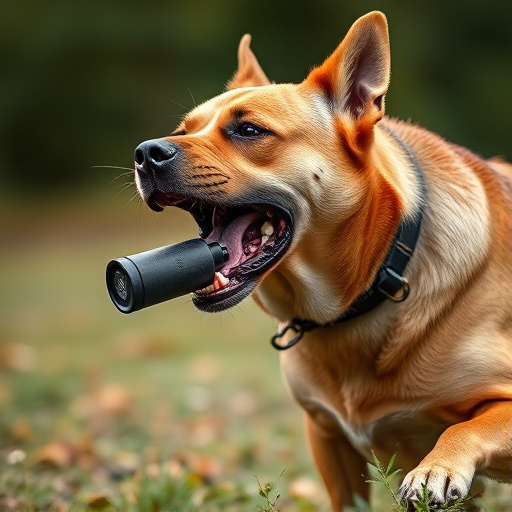Mace animal repellents are effective against aggressive wildlife in immediate encounters, creating a temporary barrier to allow retreat or help. They require proper training, knowledge of behavior, and adherence to regulations for safe use. After use, wash affected skin and seek emergency care for distressed animals. In case of pet exposure, rinse with water for 15 minutes, contact a vet, and avoid food until advised. Safety precautions include following instructions, storing properly, avoiding inhalation/direct spraying, and seeking immediate help for ingestion or eye contact.
“Discover the power of Mace Animal Repellents: a compact, convenient solution for protecting yourself and your space from unwanted wildlife. This comprehensive guide covers everything you need to know about these potent repellents. From understanding their active ingredients to mastering application techniques, we’ll walk you through effective use scenarios. Learn essential emergency care steps in case of exposure, along with safety precautions and storage tips to ensure maximum protection. Stay informed on Mace animal repellent compact spray usage for proactive wildlife management.”
- Understanding Mace Animal Repellents: An Overview
- When and How to Use the Compact Spray
- Emergency Care After Exposure to Mace
- Safety Precautions and Storage Tips for Effective Repellent
Understanding Mace Animal Repellents: An Overview
Mace animal repellents are powerful tools designed to deter and protect against potentially dangerous wildlife encounters. These compact spray devices contain a potent formula that, when sprayed, can temporarily stun or disorient animals, giving users valuable time to escape or seek assistance in emergency care for maced animals. The primary active ingredient in mace is capsaicin, the same compound responsible for the heat and irritation felt from chili peppers.
When used appropriately, mace animal repellents offer a non-lethal means of self-defense against aggressive animals like bears, dogs, or even wild cats. However, it’s crucial to understand their limitations; they may not always be effective against larger predators or those in packs. Proper training and knowledge of wildlife behavior are essential for safe and responsible use. Always follow local regulations regarding the carrying and deployment of such devices to ensure legal compliance and optimal emergency care for maced animals.
When and How to Use the Compact Spray
When using the Mace Animal Repellent Compact Spray, timing is crucial for effective emergency care of maced animals. It’s best deployed when faced with an immediate wildlife encounter, especially during the peak seasons when animals are more active and potentially aggressive due to mating or food scarcity. A quick spray can create a temporary barrier, giving you valuable time to retreat or call for professional help.
Application is straightforward but requires caution. Hold the compact spray upright, aiming slightly downwards at the approaching animal. Spray in short bursts, covering the animal’s eyes and face. Do not directly target sensitive areas like the mouth or nostrils. After use, wash any affected skin immediately with soap and water to prevent irritation, and seek emergency care for the animal if necessary, especially if it shows signs of distress or aggressive behavior.
Emergency Care After Exposure to Mace
If your pet has been exposed to mace, it’s crucial to act swiftly in providing emergency care. The first step is to remove any contaminated clothing or accessories immediately and rinse the affected area with plenty of water for at least 15 minutes. This helps to dilute the chemical spray and prevent further irritation.
Seek veterinary assistance as soon as possible. In the meantime, monitor your pet for symptoms such as coughing, difficulty breathing, eye irritation, or any unusual behaviour. Administering a small amount of milk or water can help wash out any remaining mace residue, but avoid giving your pet any food or treats until you’ve consulted a vet. Remember, emergency care for mace-exposed animals is vital to ensure their safety and well-being.
Safety Precautions and Storage Tips for Effective Repellent
When using Mace animal repellent compact spray, safety precautions are paramount. Always read and follow the instructions provided by the manufacturer to ensure effective use. In case of accidental exposure or contact with eyes, immediately flush with plenty of water for at least 15 minutes. Seek emergency care if irritation persists. Keep the spray out of reach of children and pets, and store it in a cool, dry place away from direct sunlight. Avoid inhalation and do not spray directly into any animal’s face to prevent potential harm.
For optimal effectiveness, regularly check the spray’s expiration date and keep the nozzle clean. Store the repellent in its original packaging, ideally in a locked cabinet or secure location. In case of accidental ingestion, contact your local poison control center immediately for emergency care. Remember, proper storage and handling are crucial to maintaining the potency of the Mace animal repellent and ensuring the safety of both users and animals.
Mace animal repellents, especially in their compact spray forms, offer a practical solution for deterring wildlife from your space. By understanding their usage and taking appropriate safety precautions, you can effectively protect yourself and your surroundings. In case of exposure to mace, knowing emergency care steps is crucial. Always store these repellents securely, keeping them out of reach of children and pets. With the right approach, you can coexist with wildlife harmoniously while safeguarding your living areas. For any accidental exposure, being prepared with emergency care knowledge ensures swift and effective treatment.
